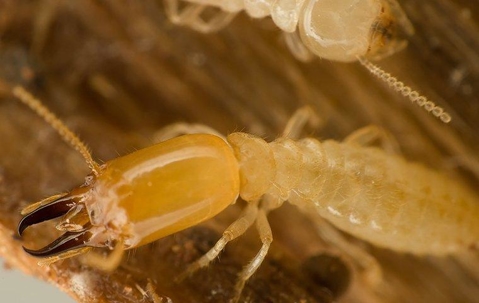Although the Bay Area is home to many pests, few are as destructive as termites. Not only do they consume wooden materials, but they also cause significant damage within a relatively short timeframe.
In this article, we’ll dive into how to identify termites in your home and the steps you can take to eliminate them. Or, for the best pest control in the Bay Area, turn to the technicians from Bay Pest. We’re happy to deliver excellent termite treatments that will eliminate an existing infestation and prevent termites from returning to your property in the future.
Signs Of Subterranean Termites On Your Bay Area Property
One of the trickiest aspects of dealing with a termite infestation is that termites usually remain hidden from sight. These tiny insects cause damage deep within the home’s structure, which doesn’t give homeowners much opportunity to spot them before it’s too late. Thankfully, termites do leave behind a few indicators of their presence. Keep an eye out for the following signs of termites in your home:
- Hollow-sounding wood
- Tiny, pinpoint holes scattered throughout your drywall
- Peeling paint
- Drooping or bowing floorboards
- Excessively squeaky floorboards
- Windows and doors that become hard to open
- Shed termite wings
- Mud tubes on your exterior walls
- Maze-like patterns of damage on wooden items
If you believe termites have taken over your home, don’t hesitate to contact the professionals from Bay Pest. We've designed our termite removal services to eliminate termite infestations of any size.
Crawl Space Subterranean Termite Infestations Problems
Many termite problems in the Bay Area begin in crawl spaces, and this is because crawl spaces provide everything termites need to thrive: warmth, moisture, and access to exposed wooden structural beams. Although crawl spaces provide a buffer between your home and the damp soil, they also tend to have insulation issues, which can lead to moisture and mold buildup. Subterranean termites live underground within the soil. If wooden portions of your home come into direct contact with the soil, it allows termites to invade more easily. Unfortunately, crawl spaces give these pests the perfect entry point to your home. Once inside, termites cause extensive damage that may cost thousands of dollars to repair.
Natural Ways To Make Your Property Less Attractive To Termites
The first step you should take to keep your property termite-free is relatively simple; eliminate the factors that may attract termites. Although this natural method won’t stop an existing infestation, it’s a great way to reduce the chances that termites will invade in the first place. Termites eat cellulose, found in many natural materials, such as wood, leaf litter, and cotton. A great way to make your home less attractive to termites is by removing cellulose-based materials from your property, including stumps, old sheds, stick piles, worn-down fences, leaf litter, and fallen trees.
Another way to avoid attracting termites to your property is to reduce excess moisture. Like many insects, termites like warm, moist environments. You can eliminate potential moisture problems by repairing leaky faucets and installing a dehumidifier in your home. Termites are much more likely to invade a home with moisture issues than one without.
The Best Subterranean Termite Control For Your Home
Termites cause immense destruction when they invade homes in the Bay Area. Without protection, these insects put your residential property at risk. The best solution for eliminating termites and other pests is professional pest management services from Bay Pest. With four decades of experience in the pest control industry, we’re ready to defend your home against the area's most challenging pest problems. You can rest easy with our technicians working the job. Don’t hesitate to reach out to Bay Pest today and receive an effective termite control plan that fits the needs of your home and family.

